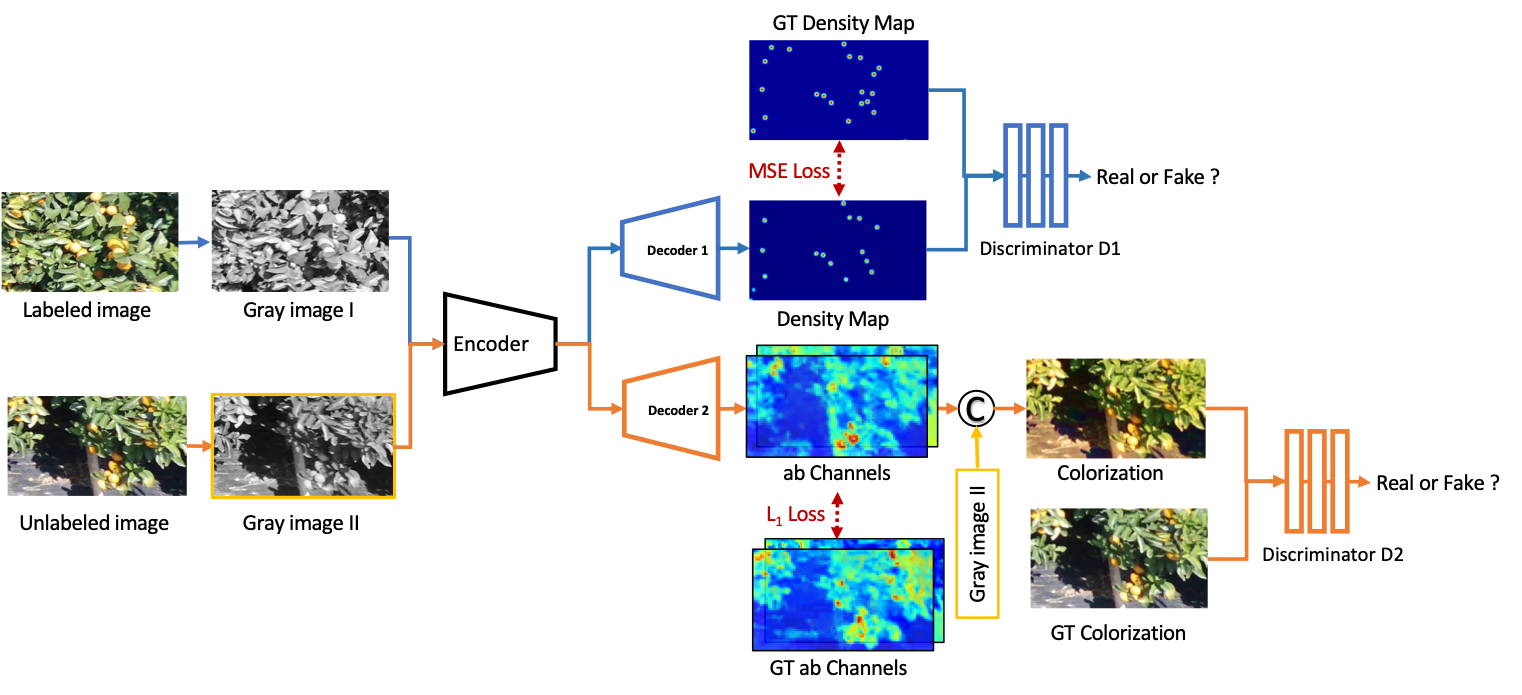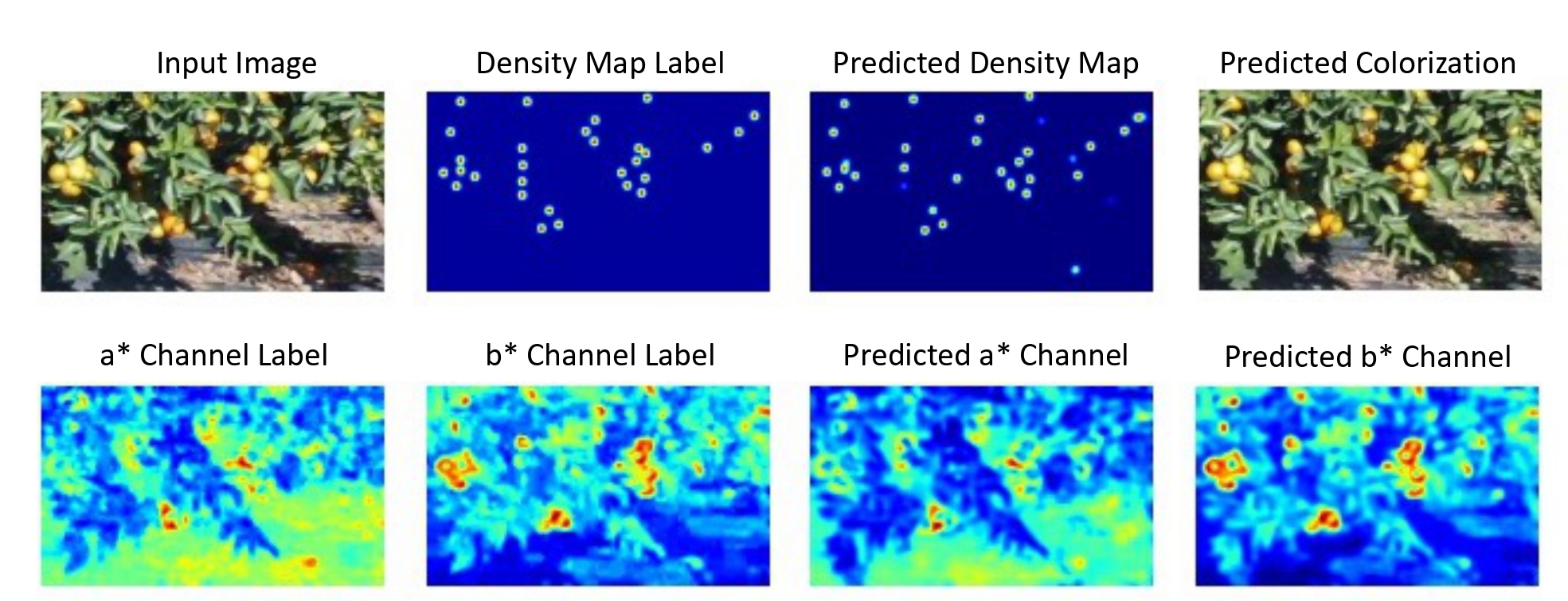


Opportunity
As global food supply becomes ever more critical in the face of population growth, accurate crop yield estimates are vital to the precision management of food production. Computer vision techniques have been demonstrated to aid in yield estimation, but current fully supervised machine learning methods require substantial human intervention for the labelling of images to train the network in crop recognition. Furthermore, labelling for one category of crops is not easily transferable to another category.
The current invention applies new techniques using a semi-supervised deep neural network for fruit quantity estimation. The system is trained using limited labeled images and many unlabeled images, greatly reducing the time and effort required for training image annotation. The end result is an output density map indicating the concentration of fruit in a given area.
Technology
An artificial neural network is a series of algorithms that recognizes underlying patterns in a set of data through a process that mimics the behavior of the human brain. The network structure consists of an input layer, one or more hidden layers, and an output layer. In simplified terms, each node, or artificial neuron, connects to another and passes data to the next layer of the network if specified conditions are met. The system is “trained” to recognize certain patterns – in this case, of fruit in images captured by a drone flying over an orchard. A weighting is given to each node, and through machine learning the network adjusts these weightings to achieve more accurate results.
The novelty of this invention lies mainly in the network architecture. Both grayscale and RGB (color) images are input to an encoder which extracts features of input images. One decoder estimates density maps of fruits, while another decoder estimates the colorization of input images. The colorization decoder improves the learning capacity of the encoder for fruits during training with many unlabeled fruit images. This generator (encoder/decoder) network is followed by a discriminator network which checks the accuracy of the output by comparing the colorized image against a Ground Truth image. The quantity of fruits in an image is obtained by simply integrating the summation of elements of an output density map.
Advantages
- Use of a semi-supervised deep neural network with limited labelled images reduces time and effort required to annotate training images.
- As compared with fully supervised networks, it is quicker and easier to train the system to recognize new categories of crops.
Applications
- Farmers and growers can use the system to help monitor crop development, make appropriate interventions, and identify the optimum time for harvesting. It forms part of the growing trend for precision management of agriculture through the application of artificial intelligence combined with other technologies.
- For parties concerned with the cost and availability of agricultural products, such as the food processing industry, economists, and governments, the system can help improve the availability of accurate data.
- Drone makers may be interested in offering the system as an application for their products.



